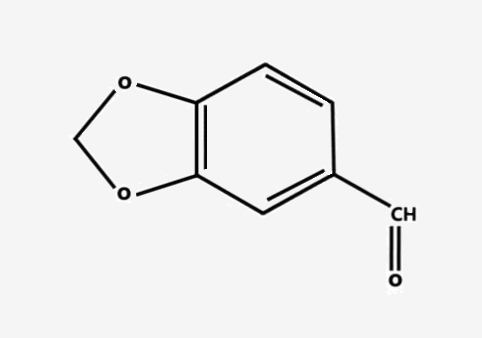Piperonal, Heliotropine, and Its Properties
Published:
2022-06-13
Heliotropine, also known as jasmine aldehyde, chemically known as 3,4-dioxymethylene benzaldehyde (3,4-methylenedioxy benzaldehyde), is widely used in synthetic fragrances, pharmaceuticals, food, daily chemicals, electroplating, etc.
Piperonal, also known as adrenaline, is an organic compound commonly found in flavors and fragrances. The molecule is structurally related to other molecules (aromatic aldehydes) such as benzaldehyde and vanillin. Piperonal is naturally found in various plants. Examples include dill, vanilla, violet flowers, and black pepper.
Piperonal has a floral scent and is often described as being related to vanillin or cherry. Therefore, it is commonly used in perfumes and artificial fragrances. The compound is named Heliotropin because of the fragrance of sunflower flowers (even though the chemical is not present in the true aroma of the flowers).
Physical and chemical properties
White or yellowish-white shiny crystals, reddish-brown when exposed to light in air. It has a sweet vanilla and cherry-like aroma. Melting point 35.5~37℃, boiling point 263℃. Very soluble in ethanol and ether, soluble in propylene glycol and most non-volatile oils, slightly soluble in mineral oil, insoluble in glycerin and water.
Product Applications
Heliotropine, also known as jasmine aldehyde, chemically known as 3,4-dioxymethylene benzaldehyde (3,4-methylenedioxy benzaldehyde), is widely used in synthetic fragrances, pharmaceuticals, food, daily chemicals, electroplating, etc. Heliotropin exists in nature in essential oils such as acacia flowers, but its amount is small and dispersed, so its source is mainly by artificial synthesis. Therefore, its source mainly relies on artificial synthesis.

Process characteristics
Heliotropin is prepared from petrochemicals in high yields by successive steps from addition to oxidation without crystallization of the intermediate 3,4-methylenedioxy bitter almond acid as the starting material. Heliotropin is not limited by the resources of safrole plant, which is conducive to the protection of ecological environment. The three waste emissions of this technology meet the environmental requirements.
Synthesis method
Most of the manufacturers at home and abroad use safrole as raw material after alkali isomerization to get isosafrole, and then produce Heliotropin by dichromate or ozone oxidation, and individual manufacturers use catechol as raw material to produce Hu Heliotropin. these methods either seriously pollute the environment, or have harsh conditions, complicated process and high cost. Therefore, the search for new synthetic methods to reduce pollution, protect the environment, improve the yield and reduce costs is the future trend of piperonal process technology development.
Hebei Haili fragrances Co., Ltd. specializes in the development, production and sales of chemical APIs, pharmaceutical intermediates, spices, polyimide monomers. The company has a strong ability of technology research and innovation.
Related News
2023-03-28
2023-03-28
WHY CHOOSE US

NEWS LETTER
We are willing to communicate extensively with friends from all walks of life at home and abroad to work together to create a better future.
Copyright:Hebei Haili Evergreen New Materials Co., Ltd


